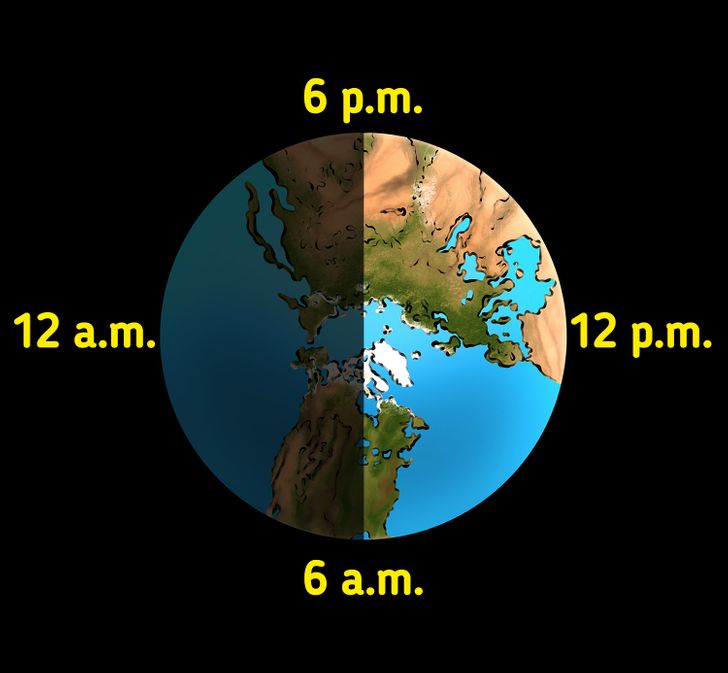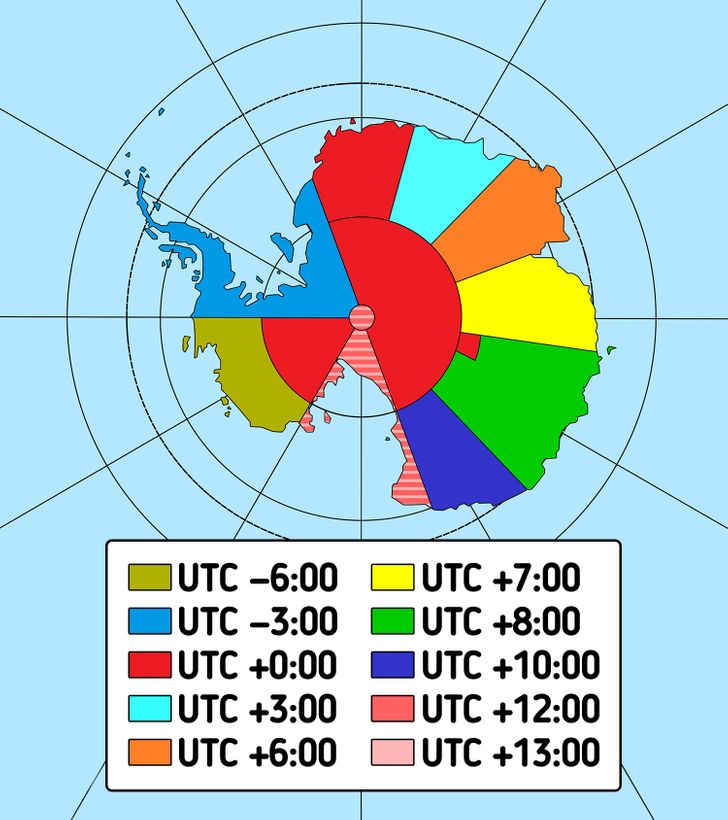How Time Zones Were Created and Why Some Countries Don’t Use Them
Thousands of years ago, people noticed that the length and the position of the Sun’s shadow from various objects and the position of the Sun in the sky are related. This was why the first sundial was created. But the concept of a time zone didn’t come into use until just recently, and thanks to this concept we have to set different times on our clocks, depending on where in the world we are.
5-Minute Crafts would like to explain what a time zone is, and what role time zones play in our lives.
What time zone is

Our planet revolves around a bright star called the Sun, so one half of the Earth is in shadow while the other one is brightly lit. Due to the rotation of the planet around its axis, daytime is replaced by nighttime and a day lasts 24 hours.
The time of day in different parts of the globe at the same moment is different: it’s noon in one place, midnight in another, and early morning in yet another place. Previously, each town used its own local solar time, which was determined by its geographic position or the position of the nearest big city.
But as rail transport developed, a need arose to standardize the time system in order to create accurate train schedules and to avoid confusion and accidents. As a result, the new time system was supposed to be based on the meridians, and it was first adopted in Great Britain. They took the count from the prime meridian, which passes through Greenwich. This is how Greenwich Mean Time (GMT) appeared and 24 time zones were formed which are geographic areas that observe a uniform standard time. The first time zones matched the geographic time zones (as can be seen on old maps), and the reference point was the Greenwich meridian.
Thanks to the development of railway transport, the new time system was gradually adopted by other countries. Since 1972, the more accurate Coordinated Universal Time (UTC) has been used instead of Greenwich Mean Time. This is the standard by which we regulate our clocks and times.

But today, world time zones often don’t match geographic time zones, because each country has the authority to establish its own official time on its territory.
As a result, the real number of time zones is more than 24, because there are territories that use additional time zones (+13 and even +14 hours), and there are places where the time zones simply disappear.
For example, France holds the record for the number of time zones. The country’s territory is located within one time zone, but taking into account all its overseas and other territories, France operates in 12 time zones at once. And in India, which ranks 7th in the world in terms of area, there is only one time zone UTC + 5:30.

Antarctica deserves special attention. It’s crossed by all the meridians of the globe, so theoretically Antarctica is located in all time zones. But in practice, everything looks different. First, the phenomena of the polar day and night are observed here, which, depending on the location, last from a day to 6 months. Secondly, the inhabitants of the polar stations use different times, depending on which country they belong to or what the location of the supply base is to which they are tied. As a result, 2 stations located close to each other can be in different time zones with a significant time difference.

The international date line stretches between 2 poles and nominally separates one day from another. At the moment midnight arrives on the date line, noon comes to the opposite Greenwich meridian. To the east from the date line, a new day has already begun, but to the west, it hasn’t yet ended.
If you look closely, the date line corresponds to the geographic meridian, but in some places, it deviates significantly from it. As a result, 2 islands, located approximately 2 miles from each other, have different time zones with a difference of 20-21 hours. Therefore, these islands are sometimes called Tomorrow Island (Big Diomede) and Yesterday Island (Little Diomede).
Thus, it’s not always possible to guess the time zone by the geographic position of a settlement. Fortunately, most phones, laptops, digital gadgets, and smartwatches automatically adjust to the correct time zone as soon as they get connected to the internet.